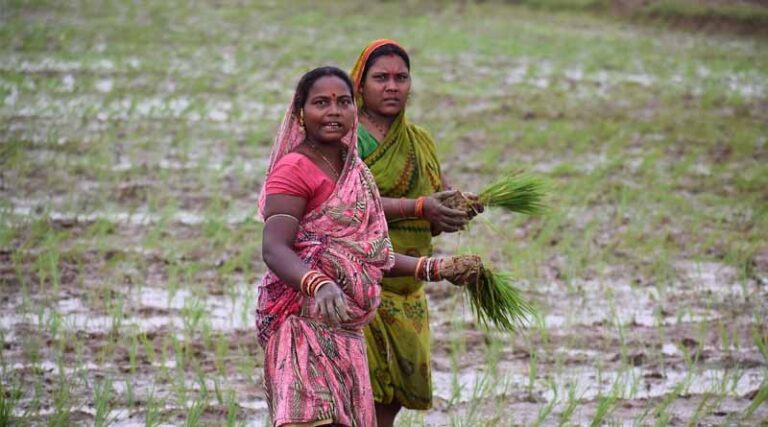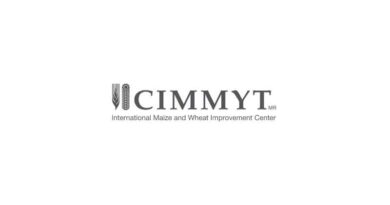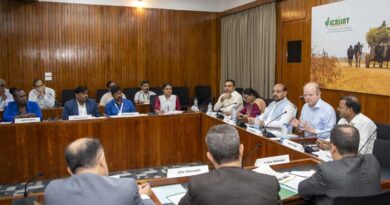
Cultivating Credit: How Fintech is Transforming the Financial Lives of India’s Farmers
Hitesh Kaneriya, Co-Founder, KuberJee
21 August 2025, New Delhi: In the heartlands of India, where agriculture remains the cornerstone of livelihood, a quiet revolution is underway — powered not by tractors or irrigation, but by technology. Fintech, once the preserve of urban dwellers, is now sowing seeds of transformation in India’s rural and semi-rural communities. Farmers, often financially excluded or underserved, are finding new hope and autonomy through digital financial tools.
India’s 100+ million farmers form the backbone of our economy, yet most remain outside the formal credit system. The primary reason? Lack of digital financial footprints. Despite working relentlessly on their farms, many small and marginal farmers—especially women—are invisible to banks. This lack of visibility results in limited access to affordable credit, pushing them towards informal lenders who charge exorbitant interest rates, trapping them in cycles of debt. But this narrative is slowly changing.
Fintech-led savings innovations, particularly gold savings platforms—a culturally trusted and tech-enabled approach—are enabling farmers to take their first step into formal finance. In rural communities, women-led families are being encouraged to start small digital savings in the form of gold, facilitated through mobile applications or with the assistance of local agents. This habit of saving in gold not only protects their wealth against inflation but also helps build a digital transaction history—often the first financial footprint for these households. By saving digitally, farmers are generating a consistent financial record—demonstrating their ability to save, transact, and plan. This data becomes a valuable digital footprint which can later be used to access formal credit, apply for crop insurance, or become eligible for government subsidies and welfare schemes.
According to NABARD’s Financial Inclusion Survey 2023, over 55% of India’s small and marginal farmers remain outside formal credit systems. With digital gold saving habits rising by 45% YOY in rural markets (WGC India, 2023), fintech platforms are creating a bridge where none existed.
For women farmers, who often do not own land or have formal income documentation, digital gold savings accounts are a game-changer. They offer a secure, asset-backed, and liquid saving method that is accessible even in remote villages with low connectivity. Moreover, these women, when trained as community-based financial facilitators or “Sakhis”, help others onboard to similar services, creating a trust-based financial network at the grassroots level.
More than just savings, these fintech tools are building financial identity and creditworthiness—the foundation for inclusive lending. Armed with data from gold savings and digital transactions, farmers can now qualify for cattle loans, farm equipment financing, or working capital credit from partnered NBFCs and banks. And since fintech platforms often work with hyperlocal agents and support regional languages, the onboarding is smooth, personal, and culturally relevant.
This transformation—fueled by technology, community trust, and savings-led credit building—is redefining how rural India interacts with finance. It’s not just about convenience, but about cultivating dignity, opportunity, and financial confidence. In the coming years, as more farmers embrace these tools, India will not only witness a boost in agricultural productivity but also in financial empowerment, led by rural women and enabled by fintech.
Because when a farmer begins saving digitally, they’re not just collecting gold—they’re cultivating credit, confidence, and a stronger future.
At the last mile, most farmers—especially women—lack a digital financial footprint, making it hard to access affordable credit. This is a systemic gap that won’t be solved overnight; it requires sustained digital engagement. Trust and support are crucial—farmers are often hesitant to engage with outsiders without assistance. One effective approach is to build their digital footprint through small, tech-enabled savings like digital gold or bank FDs—initiated via a simple mobile app. By leveraging trained local women agents, savings are enabled at the doorstep, laying the foundation for future credit access and inclusion. Digital gold transactions in semi-urban and rural regions grew by 45% YOY as per WGC India 2023 report.
Democratising Access to Credit
Digital platforms are allowing farmers to apply for credit with just a few taps on their smartphones or with the assistance of local fintech agents. By leveraging alternative data — such as satellite crop assessments, weather patterns, soil quality, and transaction history — fintech companies can offer tailor-made loan products even to farmers without a formal credit score.
For instance, a cotton farmer in rural Gujarat can now access short-term crop loans just before the sowing season and repay after harvest, synced with their agricultural cycle. These dynamic, seasonal financial products are replacing rigid, one-size-fits-all loan structures.
Credit as a Catalyst for Agricultural Productivity
Access to timely and adequate credit is not merely a financial tool — it’s an agricultural input as vital as water or seeds. With improved liquidity, farmers are empowered to buy better quality seeds, adopt mechanised tools, diversify crops, and even invest in drip irrigation or solar-powered equipment.
Over the past two years, there has been a consistent rise in farmer productivity and income across districts in Gujarat where digital credit penetration has increased. The ripple effects are visible — healthier soil, better yields, increased schooling for children, and reduced reliance on moneylenders.
Going Beyond Credit: A Fintech Ecosystem
Credit is only one piece of the puzzle. For rural India, the focus is on building a comprehensive financial ecosystem — integrating savings, insurance, investment options, and secure digital payments. Weather-indexed crop insurance, for instance, protects farmers from erratic monsoons and climate change-related losses. Digital savings products ensure that surplus income is not stored in unsafe boxes at home but is earning returns.
Collaborating with Agri-Tech & Government
Fintech alone cannot solve all rural challenges. Partnerships with agri-tech startups, Farmer Producer Organisations (FPOs), and state government schemes enable the delivery of credit in a more meaningful way. By integrating agronomic advisory, market linkage platforms, and subsidies into the digital interface, farmers see holistic value — not just transactional engagement.
The Road Ahead
India’s rural economy is poised for a fintech-driven transformation. With rising smartphone penetration, affordable data, and growing trust in digital services, the stage is set to redefine how farmers access and use financial services. But technology must walk hand-in-hand with empathy, localisation, and a deep understanding of rural realities.
Empowering the farmer is not just good business — it is nation-building. By reimagining credit as a right, not a privilege, it is sowing the seeds of a more inclusive, resilient, and prosperous rural India.
Also Read: Delhi High Court Eases Rules for Biostimulant Companies, Ensures Supply for Farmers
📢 If You’re in Agriculture, Make Sure the Right People Hear Your Story.
From product launches to strategic announcements, Global Agriculture offers unmatched visibility across international agri-business markets. Connect with us at pr@global-agriculture.com to explore editorial and advertising opportunities that reach the right audience, worldwide.






